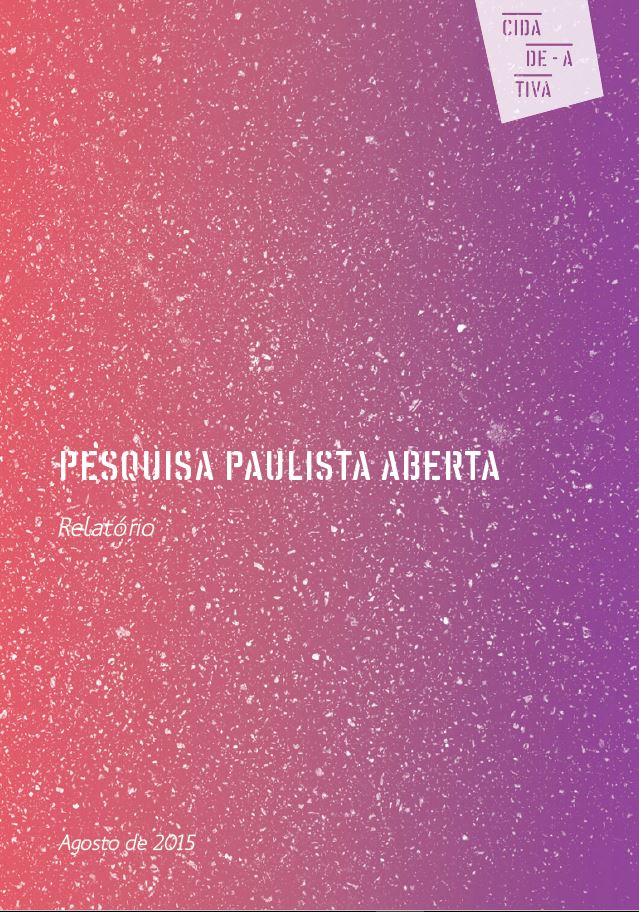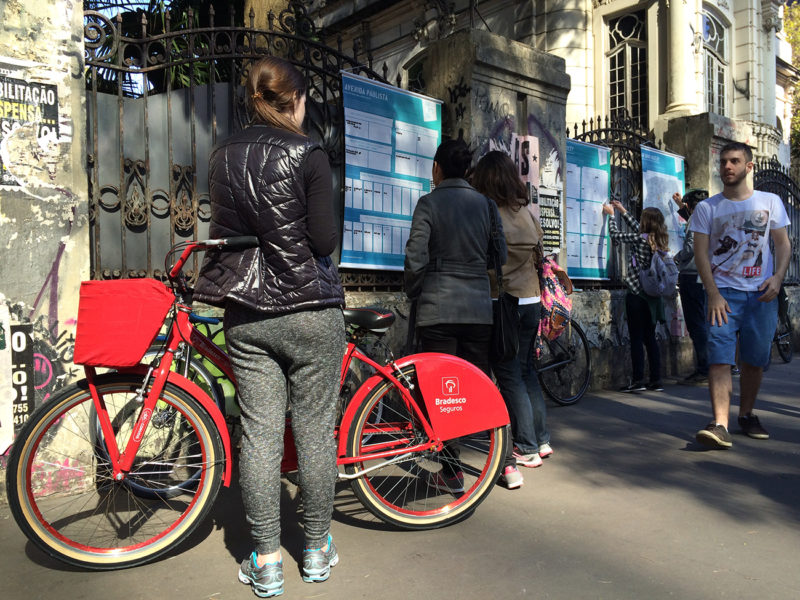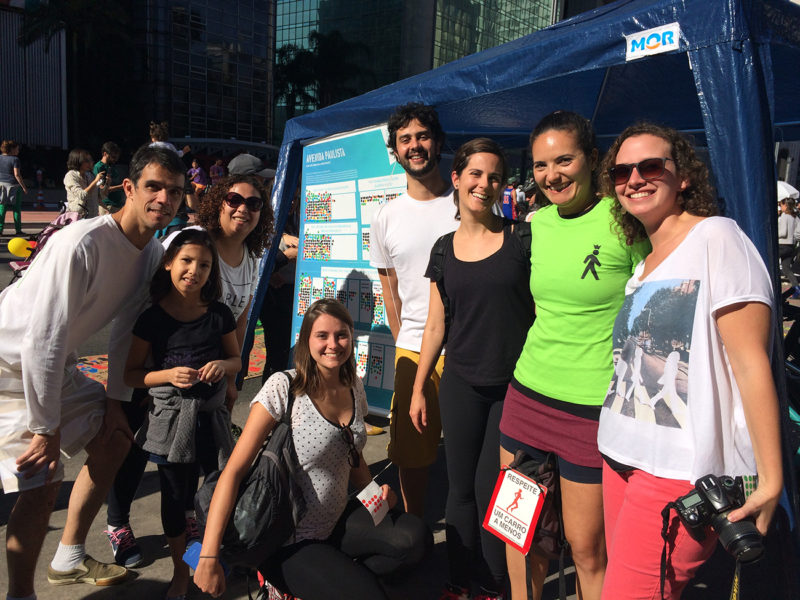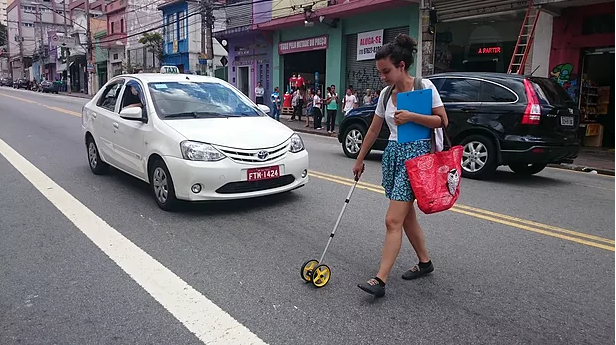
Paulista Aberta
Since the end of 2014, a network formed by formal and informal organizations from São Paulo, coordinated by SampaPé and Minha Sampa, demanded a different use of Avenida Paulista on Sundays: restricting vehicular access and, therefore, opening up space for pedestrians and cyclists, allowing for recreational and sports activities throughout its length.
A pilot of the initiative on June 28, 2015, on a Sunday, along with the inauguration of the bicycle lane, motivated Cidade Ativa to carry out a study. Using an interactive panel methodology, the study sought to gather information about the profile of the individuals who attend the place, their desires and opinions about the bike lane and new use of Avenida Paulista.

With the high adherence to the study during the event, the team decided to apply it on other days of the week, seeking to collect data from other profiles of people to verify the approval of the initiative. The final report was disseminated to local authorities and it supported the consolidation of the Open Streets Program (Programa Ruas Abertas), which provided for expansion to another 31 roads, one in each Regional Municipality.
During the consolidation period of the project’s public policy, there were arguments against the implementation of the initiative, which led several organizations to mobilize in order to defend the opening of leisure routes. Cidade Ativa, as part of this network, planned a second phase of the study. In partnership with the Experimental Atmospheric Pollution Laboratory of the Medical School of USP (University of Sao Paulo), the organization carried out measurements of noise levels and particulate matter between November and December, 2015.Data was collected during a Sunday, when the avenue opened for leisure, and on a regular Friday, and then took it to be evaluated in the laboratory. Results showed that Open Paulista Avenue was quieter and less polluted than the avenue on weekdays.
As part of a working group aimed at strengthening the initiative in the city, Cidade Ativa, along with the organizations SampaPé, Minha Sampa, Bike Anjo and Greenpeace, built up data on Open Streets during the first months of implementation and assisted the City Hall of São Paulo to enact the Program in June 2016. A Municipal Monitoring and Strengthening Committee was also established by the City Hall along with a Local Management Council in each Regional City Hall
One of the products elaborated by the Committee was the Open Streets map, carried out through two citizen diagnoses, with the help of volunteers. The purpose was verifying which streets were functioning and what improvements would be necessary.
DOWNLOADS











